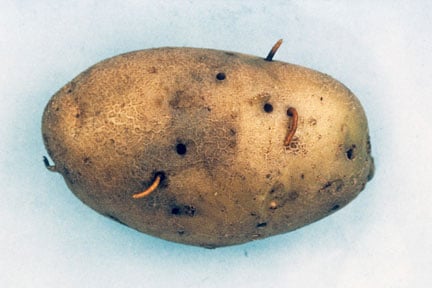Biological control in the home garden
Biological control is the use of natural enemies to manage unwanted organisms. In the home garden this usually involves introducing predators or pathogenic nematodes.

Common name - Wireworms
Plants affected - Roots of various plants
Main symptoms - Roots eaten
Caused by - Larvae of click beetles
Timing - All year
Biological control